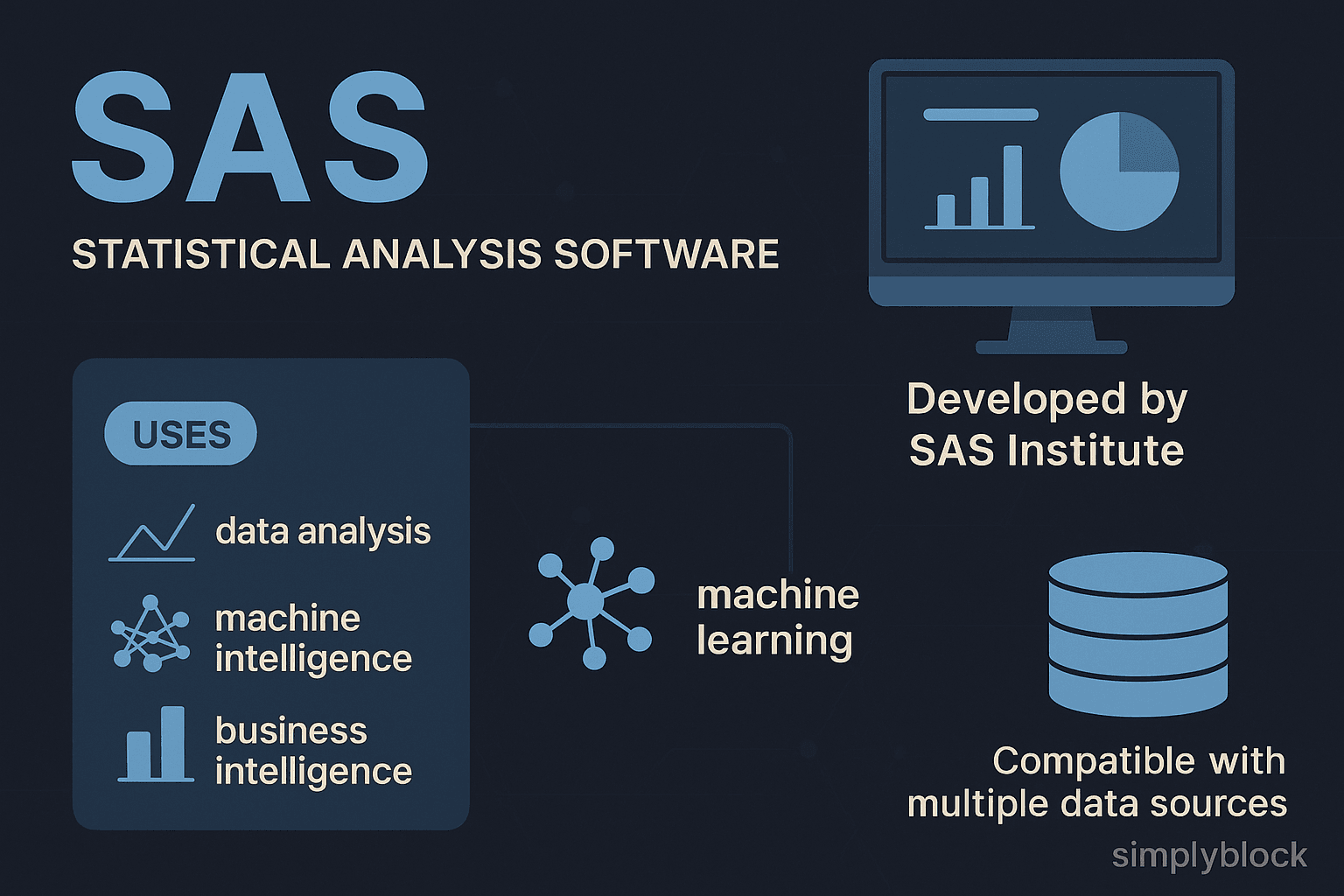SAS
Terms related to simplyblock
SAS (Serial Attached SCSI) is a high-performance interface protocol designed for connecting enterprise-class storage devices—such as hard disk drives (HDDs) and solid-state drives (SSDs)—to servers and host systems. It builds upon the legacy of parallel SCSI while introducing significant improvements in signal integrity, data throughput, and scalability.
Used widely in data centers and high-availability environments, SAS delivers advanced storage capabilities for workloads requiring reliability, redundancy, and high IOPS. Compared to SATA, SAS is engineered for continuous operation under heavy workloads, making it ideal for critical systems.
How SAS Works
SAS uses a point-to-point serial communication architecture with full-duplex signaling, allowing simultaneous read and write operations. Each drive connects directly to a SAS controller and can support dual-port connections for redundancy. This is a major differentiator from SATA, which only allows single-port, half-duplex communication.
SAS supports the SCSI command set, enabling robust queue management and error handling. It scales through expanders, allowing hundreds of drives to connect to a single controller. Versions of SAS include:
- SAS-1: 3.0 Gbps
- SAS-2: 6.0 Gbps
- SAS-3: 12.0 Gbps
- SAS-4: 22.5–24 Gbps
This bandwidth applies per lane, with multi-lane topologies supporting aggregate throughput beyond 100 Gbps.

Benefits of SAS
SAS offers enterprise-grade advantages that go beyond just speed:
- High Throughput: Higher performance under concurrent workloads due to greater command queue depths.
- Dual-Port Redundancy: Ensures high availability and failover support through redundant data paths.
- Advanced Error Correction: Reduces the risk of data loss or corruption in mission-critical environments.
- Hot Swappable Drives: Enables drive replacement or expansion without system downtime.
- Mixed Compatibility: SAS controllers can interface with SATA drives, offering flexible tiering options.
In software-defined architectures, SAS provides a balanced middle tier between NVMe and SATA for organizations optimizing performance and cost.
SAS vs SATA vs NVMe
Below is a side-by-side comparison showing how SAS fits in modern storage stacks:
| Feature | SAS (12 Gbps) | SATA (6 Gbps) | NVMe (PCIe Gen4) |
|---|---|---|---|
| Max Throughput | ~1,200 MB/s | ~600 MB/s | 7,000+ MB/s |
| Protocol | SCSI | AHCI | NVMe |
| Queue Depth | 256+ commands | 32 commands | 64K commands |
| Redundancy | Dual-port supported | Single port | Optional (multipath setup) |
| Use Case Focus | Enterprise, virtualization | Backup, cold storage | AI/ML, databases, cloud-native |
Use Cases for SAS
SAS is commonly used in scenarios that demand consistent performance and fault tolerance:
- Virtualized Environments: Backend storage for VMware, KVM, and Proxmox clusters.
- Mission-Critical Databases: Supporting Oracle, SAP HANA, SQL Server under heavy load.
- Backup & Recovery Systems: Fast, reliable data movement with robust error recovery.
- Tiered Enterprise Storage: Serving as an intermediate tier between NVMe and SATA.
SAS remains relevant in hybrid models even as NVMe adoption accelerates. Its strength lies in balancing IOPS with resiliency at a manageable cost.
SAS in Simplyblock
While simplyblock is optimized for NVMe and NVMe-over-TCP, it is architected for multi-tier storage strategies. This includes seamless integration of SAS-based devices into a unified storage fabric.
In mixed-tier environments, simplyblock intelligently manages storage placement, using SAS drives for warm data or less latency-sensitive tasks. Features like advanced erasure coding, multi-tenancy QoS, and snapshotting are applied across all storage layers, including SAS.
Within Kubernetes or virtualized platforms like VMware and Proxmox VE, simplyblock provisions persistent volumes over any supported backend. SAS becomes part of an automated data lifecycle—optimized for access frequency, cost, and application priority.
With simplyblock:
- SAS volumes are abstracted behind a unified SDS control plane.
- Workloads benefit from real-time monitoring and automated tiering.
- Volume-level security and data services apply regardless of backend type.
This flexibility allows organizations to maximize existing infrastructure while adopting NVMe where it offers clear ROI.
Related Topics
For a deeper understanding of SAS and its role in SDS, see:
- What is NVMe Over TCP?
- Hybrid Multi-Cloud Storage
- Kubernetes Persistent Volumes
- Scale-Out SDS Architecture
- Performance Bottlenecks in Database Storage
External Resources
- Serial Attached SCSI – Wikipedia
- SCSI Trade Association (STA)
- SAS vs SATA – Seagate
- Enterprise SSDs – Kingston Technology
- SAS IOM Overview – Dell Technologies
Questions and Answers
SAS (Serial Attached SCSI) is a high-speed interface used to connect enterprise-grade hard drives and SSDs. Known for reliability and performance, SAS is commonly used in data centers for transactional workloads, virtualization, and backup systems.
SAS offers better performance, durability, and queue depth than SATA, but is outpaced by NVMe over TCP in terms of latency and throughput. NVMe is ideal for high-performance applications, while SAS remains relevant for mid-tier workloads.
SAS can be used in Kubernetes via CSI-compatible storage systems, but it lacks the agility and performance of Kubernetes-native NVMe storage, which is better suited for dynamic, high-throughput container environments.
Yes. SAS is often used as a middle-performance tier in storage tiering strategies—faster than SATA for active data, but more affordable than NVMe for workloads that don’t require ultra-low latency.
SAS drives can support encryption through SEDs and are often paired with volume-level encryption for regulatory compliance. This ensures secure multi-tenant use, especially in enterprise or service provider environments.
